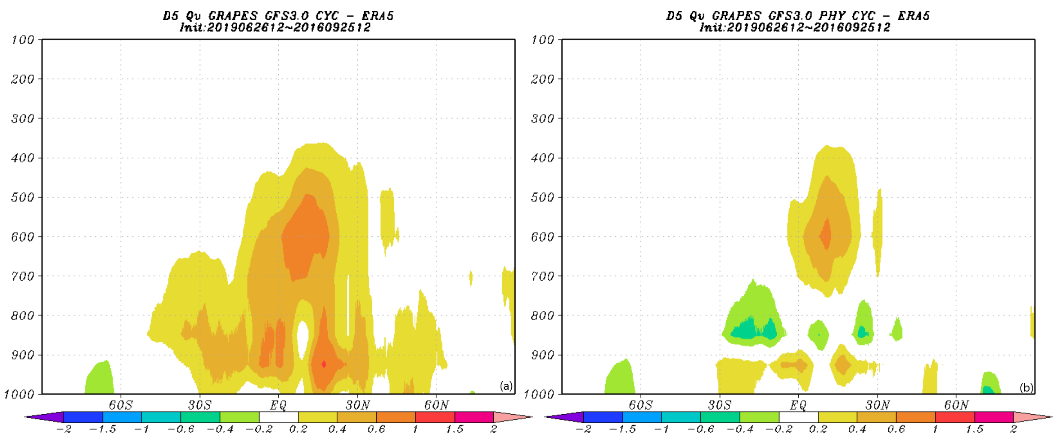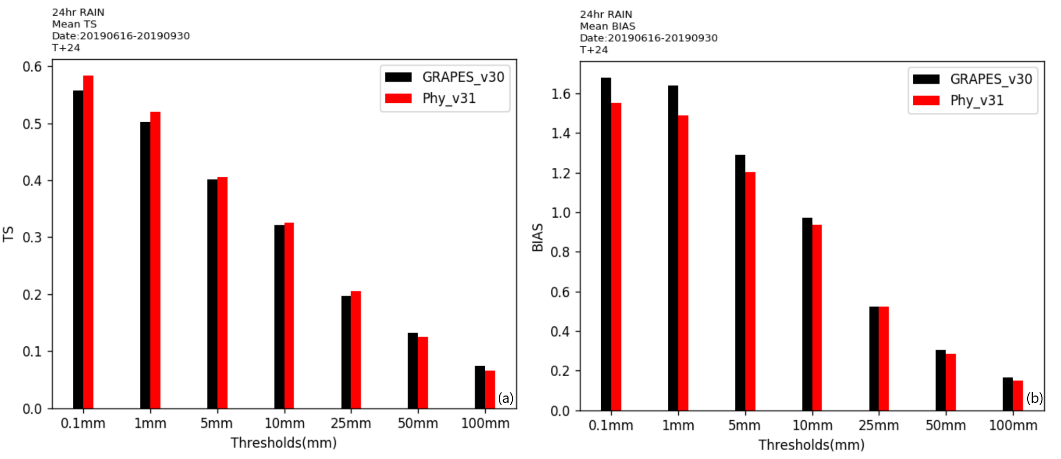In April 2021, China Meteorological Administration (CMA) began the operation of an upgraded global numerical weather prediction (NWP) system — GRAPES_GFS V3.1. The major physical improvements are outlined as follows:
1. Methane Oxidation Scheme
A new scheme was introduced to parameterized methane oxidation process which is absent in GRAPES_GFS V3.0. This scheme improved the values of water vapour in the upper stratosphere and helped to reduce the temperature and height bias above the stratosphere.
2. Land surface model
The modifications of the revised land surface model include:
1) optimized calculation of roughness length over the ocean and land;
2) consideration of the impact of salinity over the ocean related to the latent heat flux;
3) optimized calculation of soil evaporation by adding a soil resistance term;
4) introduced the supercooled soil water in consideration of the co-exist condition of liquid and ice water in the soil.
3. Moist physical processes
The updated cumulus convection scheme improved the forecast of moisture by the revised the convective trigger, the optimized auto-conversion rate from cloud condensation to convective precipitation,the revised treatment of sub-cloud layer and entrainment/detrainment rate of shallow convection. In addition, the parameterization of the organized detrainment rate was also employed in the deep convection scheme. Meanwhile, the treatment of negative moisture adjustment was also updated by considering the ratio of pressure difference of adjacent model layers instead of arbitrary weighted value.
Verifications were conducted to compare the performances of the previous and upgraded systems for four months of the boreal summer season and three months of the boreal winter season hind-cast and more than three months of parallel runs. Forecast and data assimilation were improved overall. In particular, the systematic errors including the long-standing severe moist bias and night-time 2m temperature cold bias were reduced (Figure 1), and the precipitation forecast skill scores were improved, especially in light, medium, and heavy rain (Figure 2). The new system also improved the forecast of tropical cyclone tracks over the western Pacific Ocean.
In summary, the implementation of GRAPES_GFS V3.1 will not only improve the calculation accuracy and forecast skill but also help to better support the operations at CMA.

Figure 1. Zonal mean moist bias between D5 Forecast of GRAPES_GFS and ERA5 reanalysis averaged by July-August-September 2019. (a) GRAPES_GFS V3.0, (b) GRAPES_GFS V3.1. Unit:g/kg

Figure 2. Precipitation forecast skill scores of GRAPES_GFS over China averaged by summer season 2019. The black bar is GRAPES V3.0 and the red one is GRAPES V3.1. (a) TS score, (b) Bias score.
(Editor, Liu Kun)

